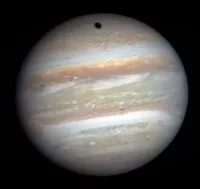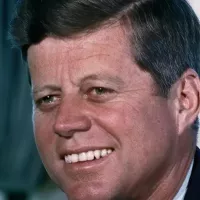NASA, the National Aeronautics and Space Administration, is an independent agency of the US federal government. Established in 1958, it succeeded the NACA, adopting a civilian orientation for American space efforts. Headquartered in Washington, D.C., NASA is organized into mission directorates covering Science, Space Operations, Exploration Systems Development, Space Technology, Aeronautics Research, and Mission Support, and it operates ten field centers across the US. NASA has spearheaded numerous space exploration programs, including Project Mercury, Project Gemini, the Apollo program, Skylab, and the Space Shuttle.
1914: Aviation Section of the US Army Signal Corps Creation
In 1914, the United States Congress created the Aviation Section of the US Army Signal Corps, recognizing the country's lag in aviation capability compared to Europe.
1915: Establishment of NACA
In 1915, the National Advisory Committee for Aeronautics (NACA) was established to foster aeronautical research and development.
1956: Air Force's Man in Space Soonest project formed
In 1956, the Air Force's Man in Space Soonest project was formed and served as a foundation for Project Mercury.
February 1, 1958: Launch of Explorer 1
On February 1, 1958, the Army Ballistic Missile Agency launched Explorer 1, which became America's first satellite.
July 29, 1958: National Aeronautics and Space Act Signed
On July 29, 1958, the National Aeronautics and Space Act was signed, officially establishing NASA.
October 1, 1958: NASA Begins Operations
On October 1, 1958, NASA officially began its operations.
1958: NASA Established
In 1958, NASA was established, succeeding the National Advisory Committee for Aeronautics (NACA). This transition marked a shift towards a civilian-oriented space program, emphasizing peaceful applications in space science.
1958: NASA's Mission at Creation
In 1958, the National Aeronautics and Space Act established NASA's mission, which included Earth science study.
1959: NASA Sounding Rocket Program in Operation
In 1959, the NASA Sounding Rocket Program (NSRP) began operations at the Wallops Flight Facility, providing launch capability, payload development, and field operations support for suborbital missions.
1960: Launch of TIROS, the first weather satellite
In 1960, NASA launched the Television Infrared Observation Satellite (TIROS), the first weather satellite, to study Earth. NASA cooperated with the United States Weather Bureau on future TIROS missions.
May 5, 1961: Alan Shepard's suborbital spaceflight
On May 5, 1961, Alan Shepard became the first American to enter space, conducting a suborbital spaceflight in the Freedom 7.
May 25, 1961: Kennedy's "Urgent National Needs" speech
On May 25, 1961, President John F. Kennedy openly declared the goal of landing an American on the Moon and returning him safely to Earth by the end of the 1960s in his "Urgent National Needs" speech to the United States Congress.
February 20, 1962: John Glenn's orbital spaceflight
On February 20, 1962, John Glenn conducted NASA's first orbital spaceflight in the Friendship 7, completing three full orbits.
September 12, 1962: "We choose to go to the Moon" speech
On September 12, 1962, President Kennedy gave his "We choose to go to the Moon" speech at Rice University, aiming to reinforce public support for the Apollo program.
May 1963: Gordon Cooper's Mercury mission
In May 1963, Gordon Cooper flew the sixth and final Mercury mission in the Faith 7, performing 22 orbits over 34 hours.
1964: Protection of NASA's budget
In 1964, President Kennedy was able to protect NASA's growing budget, despite attacks from the former president Dwight Eisenhower and presidential candidate Barry Goldwater.
1967: Formation of Aerospace Safety Advisory Panel (ASAP)
In 1967, following the Apollo 1 accident, Congress directed NASA to establish an Aerospace Safety Advisory Panel (ASAP) to advise the NASA Administrator on safety issues in air and space programs.
1968: Apollo program missions begin
In 1968, NASA began the Apollo program missions, which significantly contributed to space exploration.
1968: Apollo 8 Mission
In 1968, the Apollo 8 mission became the first crewed spacecraft to leave low Earth orbit and reach the Moon, orbiting it ten times on December 24 and 25 before safely returning to Earth.
1969: Apollo 11 Landing on the Moon
In 1969, Apollo 11 landed on the Moon using a mix of United States customary units and metric units.
1969: Johnson Space Center designated lead center for Space Shuttle
In 1969, NASA designated the Johnson Space Center as the lead center for the design, development, and manufacturing of the Space Shuttle orbiter. The Marshall Space Flight Center would lead the development of the launch system.
1969: Influence on American popular culture
In 1969, following the Apollo 11 mission, NASA began to exert a notable influence on American popular culture, becoming a subject of numerous major films.
1971: Establishment of Space Program Advisory Council and Research and Technology Advisory Council
In 1971, NASA established the Space Program Advisory Council and the Research and Technology Advisory Council to provide advisory support to the administrator.
1972: Apollo program missions continue
In 1972, NASA continued the Apollo program missions, which significantly contributed to space exploration.
1972: Apollo 17 Concludes Apollo Program
In 1972, NASA's Apollo 17 concluded the Apollo program, marking the end of six lunar landings.
1972: Official development of the Space Shuttle begins
In 1972, official development of the Space Shuttle began, with Rockwell International contracted to design the orbiter and engines, Martin Marietta for the external fuel tank, and Morton Thiokol for the solid rocket boosters.
1973: Launch of Skylab
In 1973, following the end of the Apollo lunar missions, NASA launched its first space station, Skylab, on the final launch of the Saturn V.
1974: Skylab Hosted Nine Missions
In 1974, Skylab hosted nine missions and was decommissioned.
1975: Apollo-Soyuz mission
In 1975, the Apollo–Soyuz mission marked the first international spaceflight and a major diplomatic achievement between the Cold War rivals. It also marked the last flight of the Apollo capsule.
1976: Viking program landings on Mars
In 1976, the Viking program consisted of two landings on Mars.
1977: Formation of NASA Advisory Council (NAC)
In 1977, the Space Program Advisory Council and the Research and Technology Advisory Council were combined to create the NASA Advisory Council (NAC).
1977: Voyager program launch
In 1977, the Voyager program launched, conducting flybys of Jupiter and Saturn, Neptune, and Uranus on a trajectory to leave the Solar System.
1979: Deorbit of Skylab
In 1979, Skylab was deorbited, two years before the first launch of the Space Shuttle.
1981: First Space Shuttle flight: Columbia on STS-1 mission
In 1981, the first Space Shuttle flight occurred when the Columbia launched on the STS-1 mission. It was designed to serve as a flight test for the new spaceplane.
1984: President Reagan supports building a larger space station
In 1984, President Ronald Reagan declared his support for building a larger space station, envisioning it as an orbital laboratory, repair station, and a jumping off point for lunar and Mars missions.
1984: STS-41-C mission conducts first on-orbit satellite servicing
In 1984, the STS-41-C mission conducted the world's first on-orbit satellite servicing mission when the Challenger captured and repaired the malfunctioning Solar Maximum Mission satellite.
1985: NASA proposes Space Station Freedom
In 1985, NASA proposed the Space Station Freedom, intended as an international program. An international agreement to develop the program would be signed with thirteen countries.
1986: Challenger disaster on STS-51L mission
In 1986, the Challenger disaster on the STS-51L mission resulted in the loss of the spacecraft and all seven astronauts on launch, grounding the entire space shuttle fleet for 36 months. This forced the 44 commercial companies that contracted with NASA to deploy their satellites to return to expendable launch vehicles.
1990: Launch of the Hubble Space Telescope
In 1990, the Hubble Space Telescope was launched on STS-31 from the Discovery, with the capability of viewing galaxies 15 billion light years away.
1990: NASA Purchases Launch Services from Commercial Providers
Since 1990, NASA's Launch Services Program (LSP) has been purchasing expendable launch vehicle launch services directly from commercial providers, whenever possible, for its scientific and applications missions.
1991: Launch of the Compton Gamma Ray Observatory
In 1991, the Compton Gamma Ray Observatory was launched from the Atlantis on STS-37, discovering a possible source of antimatter at the center of the Milky Way.
1992: Redesigns to reduce Space Station Freedom costs
In the early 1990s, several redesigns to reduce the cost of Space Station Freedom were conducted in 1992, stripping away many of its functions.
1992: Cancellation of the Rockwell X-30 National Aerospace Plane
With the end of the Cold War, the Rockwell X-30 National Aerospace Plane program was canceled in 1992 before reaching flight status, ending a joint NASA-Department of Defense effort.
September 1993: Cooperation between NASA and Roscosmos on ISS
In September 1993, NASA and Roscosmos initiated cooperation on the development and operation of the International Space Station (ISS), using launch systems from both countries.
1993: President Clinton directs cost reductions for Space Station Freedom
In 1993, President Bill Clinton directed that costs be significantly reduced for the Space Station Freedom program, while ensuring aerospace industry jobs were not lost and the Russians were included.
1993: Merger of space station projects into the International Space Station
In 1993, US budget constraints led to the merger of NASA's Space Station Freedom project with the Russian Mir-2 station, the European Columbus station, and the Japanese Kibō laboratory module into a single multi-national program called the International Space Station.
1993: Space Station Freedom becomes International Space Station
In 1993, the Clinton Administration announced that the Space Station Freedom would become the International Space Station in an agreement with the Russian Federation.
1994: Socioeconomic Data and Applications Center (SEDAC) Founded
In 1994, the Socioeconomic Data and Applications Center (SEDAC) was founded to archive and distribute data related to human interactions in the environment.
1994: First Russian cosmonaut flies on the STS-60 mission
In 1994, the first Russian cosmonaut flew on the STS-60 mission, marking a milestone in collaboration between the United States and Russia.
1996: Mars Global Surveyor and Mars Pathfinder Missions
In 1996, NASA launched the Mars Global Surveyor orbiter and Mars Pathfinder, which deployed the first Mars rover, Sojourner.
1998: End of the Shuttle-Mir program due to orbital accidents
In 1998, a series of orbital accidents on the space station spelled an end to the Shuttle-Mir program, concluding a period of joint US-Russian space cooperation.
1998: US Congress Mandates NASA to Detect Near-Earth Asteroids
In 1998, the United States Congress gave NASA a mandate to detect 90% of near-Earth asteroids over 1 km (0.62 mi) diameter (that threaten global devastation) by 2008.
1998: On-orbit assembly of the International Space Station begins
In 1998, the on-orbit assembly of the International Space Station began, using components manufactured in various factories around the world and launched by Russian Proton and Soyuz rockets, and the American Space Shuttle.
1998: Scanning the Sky for NEOs Since Spaceguard Started
Since 1998, the United States, the European Union, and other nations had been scanning the sky for NEOs in an effort called Spaceguard.
September 23, 1999: Loss of Mars Climate Orbiter
On September 23, 1999, a mix-up between NASA's use of SI units and Lockheed Martin Space's use of US units resulted in the loss of the Mars Climate Orbiter.
1999: NASA visited 433 Eros with the NEAR Shoemaker spacecraft
In 1999, NASA visited 433 Eros with the NEAR Shoemaker spacecraft which entered its orbit in 2000, closely imaging the asteroid with various instruments at that time.
1999: Launch of the Chandra X-ray Observatory
In 1999, the Chandra X-ray Observatory was launched from the Columbia on STS-93, observing black holes, quasars, supernova, and dark matter.
2000: NEAR Shoemaker Entered Orbit
In 2000, the NEAR Shoemaker spacecraft entered the orbit of 433 Eros, closely imaging the asteroid with various instruments at that time.
2001: Cancellation of the VentureStar spaceplane development
Due to technical challenges, the Lockheed Martin X-33 demonstrator of the VentureStar spaceplane was cancelled in 2001, despite being the first time a commercial space company directly expended a significant amount of its resources into spacecraft development.
2001: 2001 Mars Odyssey orbiter reached the planet
In 2001, the 2001 Mars Odyssey orbiter reached Mars.
May 8, 2003: EPA Recognition of NASA's Landfill Gas Utilization
On May 8, 2003, the Environmental Protection Agency recognized NASA as the first federal agency to directly use landfill gas to produce energy at the Goddard Space Flight Center in Greenbelt, Maryland.
2003: NASA relies on Russian Soyuz launches after Columbia disaster
Following the Space Shuttle Columbia disaster in 2003, NASA was forced to rely on Russian Soyuz launches for its astronauts to reach the International Space Station.
2003: President Bush starts the Constellation program
Following the Space Shuttle Columbia disaster in 2003, President Bush started the Constellation program to smoothly replace the Space Shuttle and expand space exploration beyond low Earth orbit.
2003: Columbia destroyed upon reentry during STS-107 mission
In 2003, the Columbia was destroyed upon reentry during the STS-107 mission, resulting in the loss of the spacecraft and all seven astronauts. This marked the beginning of the retiring of the Space Shuttle program.
2003: Launch of the Spitzer Space Telescope
In 2003, the Spitzer Space Telescope was launched from a Delta II rocket, discovering the existence of brown dwarf stars.
November 2004: Neil Gehrels Swift Observatory Launched
In November 2004, the Neil Gehrels Swift Observatory, designed to observe gamma-ray bursts and their afterglows, was launched as a collaborative effort among NASA's Goddard Space Flight Center, the United Kingdom, and Italy.
2004: MESSENGER probe launch to Mercury
In 2004, NASA launched missions to Mercury, with the MESSENGER probe demonstrating the first use of a solar sail.
2004: Spirit and Opportunity rovers landed on Mars
In 2004, the Spirit and Opportunity rovers landed on Mars.
2005: Mars Reconnaissance Orbiter launched
In 2005, the Mars Reconnaissance Orbiter was launched to Mars.
2005: George E. Brown, Jr. Near-Earth Object Survey Act Extends Spaceguard Mandate
In 2005, the original USA Spaceguard mandate was extended by the George E. Brown, Jr. Near-Earth Object Survey Act, which calls for NASA to detect 90% of NEOs with diameters of 140 m (460 ft) or greater, by 2020.
2005: Creation of NASAcast
In late 2005, NASAcast, the official audio and video podcast of the NASA website, was created to provide the latest audio and video features from NASA, including NASA TV's This Week at NASA and educational materials.
2005: George E. Brown, Jr. Near-Earth Object Survey Act
The 2005 George E. Brown, Jr. Near-Earth Object Survey Act extended the USA Spaceguard mandate, tasking NASA with detecting a specified percentage of near-Earth objects by a target date.
2006: NASA and Air Force Space Command Sign Agreement
In 2006, NASA and Air Force Space Command signed an agreement, which was replaced by a new memorandum of understanding with the Space Force in September 2020.
2006: New Horizons mission launch to Pluto
In 2006, the New Horizons mission was launched as the first spacecraft to visit Pluto and the Kuiper belt.
2006: Space Shuttle returns to flight, servicing Hubble Space Telescope
In 2006, the Space Shuttle returned to flight, conducting several mission to service the Hubble Space Telescope after the Columbia disaster.
March 18, 2007: NASA EDGE Release
On March 18, 2007, NASA released NASA EDGE, a video podcast exploring NASA missions, technologies, and projects.
August 2007: NASA's SI System Usage
In August 2007, NASA stated that all future missions and explorations of the Moon would be done entirely using the SI system to improve cooperation with international space agencies.
2007: NASA and FAA Collaborate to Modernize National Airspace System
In 2007, NASA began collaborating with the Federal Aviation Administration and industry stakeholders to modernize the United States National Airspace System (NAS), with a goal to deliver major modernization components by 2025.
2008: Target Year for NASA to Detect 90% of Near-Earth Asteroids
In 2008, the initial target year set in 1998 by the US Congress for NASA to detect 90% of near-Earth asteroids over 1 km in diameter.
May 2009: ISS expedition crew size increased to six
Between May 2009 and until the retirement of the Space Shuttle, the International Space Station expedition crew size has been six crew members, increasing the research capabilities.
2009: Launch of the Kepler space telescope
In 2009, the Kepler space telescope was launched to identify planets orbiting extrasolar stars that may be Terran and possibly harbor life.
2009: WISE/NEOWISE Mission Launched
In 2009, the WISE/NEOWISE mission was launched by NASA JPL as an infrared-wavelength astronomical space telescope.
2009: Completion of the US Orbital Segment of the ISS
The completion of the US Orbital Segment of the International Space Station occurred in 2009, marking a significant milestone in the station's construction.
2010: LEED Gold Rating for Exploration Sciences Building
In 2010, the Exploration Sciences Building was awarded the LEED Gold rating, highlighting NASA's environmental efforts.
2010: Completion of the Russian Orbital Segment of the ISS
The completion of the Russian Orbital Segment of the International Space Station occurred in 2010, finalizing the core structure of the station.
2011: NASA Meets Initial Mandate to Detect Near-Earth Asteroids
By 2011, NASA met the initial mandate set in 1998 by the US Congress to detect 90% of near-Earth asteroids over 1 km in diameter.
2011: NASA Addressed Environmental Concerns with Constellation Program
In 2011, NASA addressed environmental concerns associated with its cancelled Constellation program in accordance with the National Environmental Policy Act.
2011: Retirement of the Space Shuttle program
In 2011, the Space Shuttle program was retired following the STS-135 resupply mission to the International Space Station, marking the end of an era in spaceflight.
2011: Retirement of Space Shuttle accelerates ISS completion
In 2011, the retirement of the Space Shuttle accelerated the International Space Station's completion, influencing the timeline and resources allocated to the project.
2011: Establishment of ELaNa Program
Since 2011, the Educational Launch of Nanosatellites (ELaNa) program has provided opportunities for NASA to work with university teams to test emerging technologies and commercial-off-the-shelf solutions by providing launch opportunities for developed CubeSats.
2012: Curiosity rover discovers radiation levels and chemical ingredients for life
In 2012, the Curiosity rover discovered that the radiation levels on Mars were equal to those on the International Space Station, greatly increasing the possibility of human exploration, and observed the key chemical ingredients for life to occur.
2013: NEOWISE Mission Repurposed to Find Near-Earth Asteroids and Comets
In 2013, NASA repurposed the WISE mission as the NEOWISE mission to find potentially hazardous near-Earth asteroids and comets.
2013: Chelyabinsk Meteor
In 2013, the 20-meter Chelyabinsk meteor hit Russia, a reminder of the potential impact of NEOs.
2013: MAVEN mission observed the Martian atmosphere
In 2013, the Mars Atmosphere and Volatile Evolution (MAVEN) mission observed the Martian upper atmosphere and space environment.
September 2014: NASA and ISRO Partnership for NISAR Mission
In September 2014, NASA and the Indian Space Research Organisation (ISRO) signed a partnership to collaborate on and launch a joint radar mission, the NASA-ISRO Synthetic Aperture Radar (NISAR) mission.
2014: Start of Cubes in Space Competition
In 2014, NASA started an annual competition named "Cubes in Space" jointly organized by NASA and I Doodle Learning to teach school students to design and build scientific experiments for space launch.
2014: Reaffirmation of ASAP Importance
In 2014, the NASA Authorization Act reaffirmed the importance of the Aerospace Safety Advisory Panel (ASAP).
2014: Launch of NASA-JAXA Global Precipitation Measurement mission
In 2014, the NASA-JAXA Global Precipitation Measurement mission was launched, including both NASA- and JAXA-supplied sensors on a NASA satellite launched on a JAXA rocket to provide frequent and accurate measurements of rainfall globally.
2014: Liquid Fuel Consumption in the United States in 2014
In 2014, the United States consumed 803 million US gallons of liquid fuels per day, while a single Falcon 9 rocket burns approximately 25,000 US gallons of kerosene fuel per launch, representing a small fraction of the total liquid fuel consumption.
2016: Planetary Defense Coordination Office (PDCO) Established
In 2016, NASA established the Planetary Defense Coordination Office (PDCO) to catalog and track potentially hazardous near-Earth objects (NEO) and develop potential responses and defenses against these threats.
June 21, 2017: Launch of KalamSAT
On June 21, 2017, the world's smallest satellite, KalamSAT, was launched as part of the "Cubes in Space" program.
2018: Launch of CAUTION Project
In 2018, NASA along with other companies launched the CAUTION (CoAtings for Ultra High Temperature detectION) project to enhance the temperature range of the Thermal History Coating and improve the safety of jet engines while increasing efficiency and reducing CO2 emissions.
2018: InSight studied the Martian interior
In 2018, the Interior exploration using Seismic Investigations Geodesy, and Heat Transport (InSight) studied the Martian interior.
2019: NASA announces the Artemis program
In 2019, NASA announced the Artemis program, intending to return to the Moon and establish a permanent human presence. This was paired with the Artemis Accords with partner nations to establish rules of behavior and norms of space commercialization on the Moon.
January 2020: NASA Estimates Time to Find All Objects Meeting Size Criteria
In January 2020, NASA officials estimated it would take 30 years to find all objects meeting the 140 m size criteria, more than twice the timeframe that was built into the 2005 mandate.
January 2020: Less Than Half of NEOs Found
As of January 2020, it is estimated that less than half of NEOs with diameters of 140 m or greater, have been found.
July 29, 2020: NASA Requests Proposals for Lunar Water Extraction Technologies
On July 29, 2020, NASA requested American universities to propose new technologies for extracting water from the lunar soil and developing power systems, to help conduct sustainable exploration of the Moon.
September 2020: NASA and Space Force Sign Memorandum of Understanding
In September 2020, NASA and the Space Force formally acknowledged their joint role by signing a memorandum of understanding, replacing a similar document from 2006.
December 18, 2020: Colonel Michael S. Hopkins commissioned into Space Force
On December 18, 2020, Colonel Michael S. Hopkins, commander of SpaceX Crew-1, was commissioned into the Space Force from the International Space Station, signifying partnership between NASA and the Space Force.
2020: NASA Wins Webby People's Voice Award
In 2020, NASA won the Webby People's Voice Award for Green in the Web category.
June 2021: NASA Authorizes Development of NEO Surveyor Spacecraft
In June 2021, NASA authorized the development of the NEO Surveyor spacecraft to reduce the projected duration to achieve the mandate down to 10 years.
July 2021: NASA Awards Contracts for Nuclear Thermal Propulsion Reactor Development
In July 2021, NASA announced contract awards for the development of nuclear thermal propulsion reactors, with three contractors developing individual designs over 12 months for later evaluation by NASA and the US Department of Energy.
September 27, 2021: Launch of Landsat 9
On September 27, 2021, Landsat 9, the most recent satellite in the Landsat series, was launched.
December 2021: James Webb Space Telescope Launched
In December 2021, the James Webb Space Telescope (JWST) was launched on an Ariane 5 rocket to operate in a halo orbit around the Sun-Earth L2 point, designed for high-sensitivity infrared spectrum and imaging resolution.
2021: Launch of the James Webb Space Telescope
In 2021, the James Webb Space Telescope, named after the NASA administrator who led the Apollo program, was launched as an infrared observatory intended to observe the formation of the first galaxies.
2021: Perseverance rover carried Ingenuity to Mars
In 2021, the Perseverance rover carried the first extraplanetary aircraft, a helicopter named Ingenuity, to Mars.
March 2022: GOES-T Satellite Joins US Geostationary Weather Monitoring Satellites
In March 2022, the GOES-T satellite (later designated GOES-18 after launch) joined the fleet of US geostationary weather monitoring satellites.
May 13, 2022: rHEALTH ONE Analyzer Tested in Space
On May 13, 2022, NASA and SpaceX Crew-4 astronauts successfully tested its rHEALTH ONE universal biomedical analyzer for its ability to identify and analyzer biomarkers, cells, microorganisms, and proteins in a spaceflight environment.
June 2022: First NASA Rocket Launch from Commercial Spaceport Outside US
In June 2022, NASA conducted its first rocket launch from a commercial spaceport outside the US, launching a Black Brant IX from the Arnhem Space Centre in Australia.
June 2022: NASA's UAP Independent Study Team
In June 2022, Thomas Zurbuchen, head of the NASA Science Mission Directorate, confirmed the start of NASA's UAP independent study team to bring a scientific perspective to the study of unidentified aerial phenomena. He noted it as "high-risk, high-impact" research.
June 2022: Launch of NASA-sponsored CubeSats on Virgin Orbit LauncherOne vehicle
In June 2022, two NASA-sponsored CubeSats launched on a Virgin Orbit LauncherOne vehicle as the ELaNa 39 mission as part of the Educational Launch of Nanosatellites (ELaNa) program.
July 2022: NASA and Roscosmos Agreement on Space Station Flights
In July 2022, NASA and Roscosmos signed a deal to share space station flights, enabling crew from each country to ride on the systems provided by the other.
September 26, 2022: DART Impacts Dimorphos Asteroid
On September 26, 2022, the DART spacecraft successfully impacted the Dimorphos asteroid to test planetary defense concepts.
October 2022: Landsat Program Status Update
As of October 2022, nine satellites had been built under the Landsat program, with eight of them successfully operating in orbit, providing a unique resource for global change research and applications.
2022: NASA X-57 Maxwell Experimental Aircraft Scheduled for First Flight
In 2022, NASA's X-57 Maxwell, an experimental all-electric aircraft, was scheduled to fly before the end of the year, after completing ground testing in its initial configuration.
January 2023: NASA Partners with DARPA on DRACO Program
In January 2023, NASA announced a partnership with the Defense Advanced Research Projects Agency (DARPA) on the Demonstration Rocket for Agile Cislunar Operations (DRACO) program to demonstrate a NTR engine in space.
June 2023: 22 Countries Sign Artemis Accords
As of June 2023, 22 countries had signed the Artemis Accords, which define a framework for cooperation in the peaceful exploration of the Moon, Mars, asteroids, and comets.
July 2023: NASA and DARPA Award Lockheed Martin $499 Million to Build Experimental NTR Rocket
In July 2023, NASA and DARPA jointly announced the award of $499 million to Lockheed Martin to design and build an experimental NTR rocket to be launched in 2027.
July 2023: NASA+ Announcement
In July 2023, NASA announced the upcoming launch of NASA+, a free, ad-free streaming service.
November 8, 2023: NASA+ Launch
On November 8, 2023, NASA launched NASA+, a new streaming service offering live coverage of launches, documentaries, and original programs.
2023: NASA establishes the Moon to Mars Program office
In 2023, NASA established the Moon to Mars Program office to oversee the various projects, mission architectures, and associated timelines relevant to lunar and Mars exploration and science.
2023: Mission extended into 2023
The NEOWISE mission was extended into 2023.
December 23, 2024: Center Leadership Valid as of December 23, 2024
Information regarding the directors leading NASA's 10 major field centers and subordinate facilities was valid as of December 23, 2024.
2024: ISS continuously occupied for over 25 years
As of 2024, the International Space Station has been continuously occupied for the past 25 years and 17 days, having exceeded the previous record held by Mir. Expeditions typically consist of a crew of four.
2024: NASA Tasked to Create Time Standard for the Moon
In 2024, NASA was tasked by the US Government to create a Time standard for the Moon, to be called Coordinated Lunar Time.
May 31, 2025: Withdrawal of Jared Isaacman's Nomination
On May 31, 2025, the administration's original nominee of Jared Isaacman was withdrawn as NASA administrator.
July 2025: Directive to Fast-Track Plans for Placing Nuclear Reactor on the Moon
In July 2025, Acting NASA Administrator Sean Duffy issued a directive to fast-track plans for placing a nuclear reactor on the Moon to support the agency's Artemis program and maintain U.S. leadership in space exploration.
July 30, 2025: Launch of NASA-ISRO Synthetic Aperature Radar (NISAR) mission
The NASA-ISRO Synthetic Aperture Radar (NISAR) mission was launched on July 30, 2025.
November 4, 2025: Renomination of Jared Isaacman
On November 4, 2025, Jared Isaacman was renominated for the position of NASA administrator.
2025: Sean Duffy, acting administrator
As of 2025, Sean Duffy is the acting administrator for NASA.
2025: Goal to Deliver Major Modernization Components of National Airspace System
The modernization effort to increase the safety, efficiency, capacity, access, flexibility, predictability, and resilience of the NAS while reducing the environmental impact of aviation is set for 2025.
2026: NEO Surveyor Spacecraft Launch Scheduled
The NEO Surveyor spacecraft, designed to survey the Solar System for potentially hazardous asteroids, is scheduled to launch in 2026.
2026: Coordinated Lunar Time Expected to be Finalized
The Time standard for the Moon, to be called Coordinated Lunar Time, is expected to be finalized in 2026.
2027: Experimental NTR Rocket Launch Planned
In 2027, NASA and DARPA are planning to launch the experimental NTR rocket which is currently under development by Lockheed Martin.
Mentioned in this timeline

Donald John Trump is an American politician media personality and...

Jupiter is the fifth and largest planet from the Sun...

SpaceX founded in is a private American aerospace manufacturer and...

Bill Clinton the nd U S President - served as...

John F Kennedy JFK was the th U S President...
California is a U S state on the Pacific Coast...
Trending
2 months ago Trent McDuffie discusses playing multiple positions and motivates Chiefs before Jaguars game.

19 days ago Kyle Schwarber sparks free agency buzz: Phillies, Pirates show interest in slugger.
7 days ago Andy Garcia Teases Landman Season 2, Discusses Role and Fort Worth Restaurants.

Jared McCain is an American basketball player currently playing for the NBA's Philadelphia ers He previously played college basketball for...
Jo'Quavious Dequane Woody Marks is an American professional football running back for the Houston Texans of the NFL He played...

8 months ago Nick Chubb declares he's just getting started amidst free agency, addressing future plans.
Popular
Matt and Ross Duffer known as the Duffer Brothers are...
Aftyn Alyssa Behn is an American politician currently serving as...

Candace Owens is an American conservative political commentator and author...

XXXTentacion born Jahseh Dwayne Ricardo Onfroy was a controversial yet...

Ilhan Omar is an American politician currently serving as the...

Harriet Tubman was a pivotal American abolitionist and social activist...